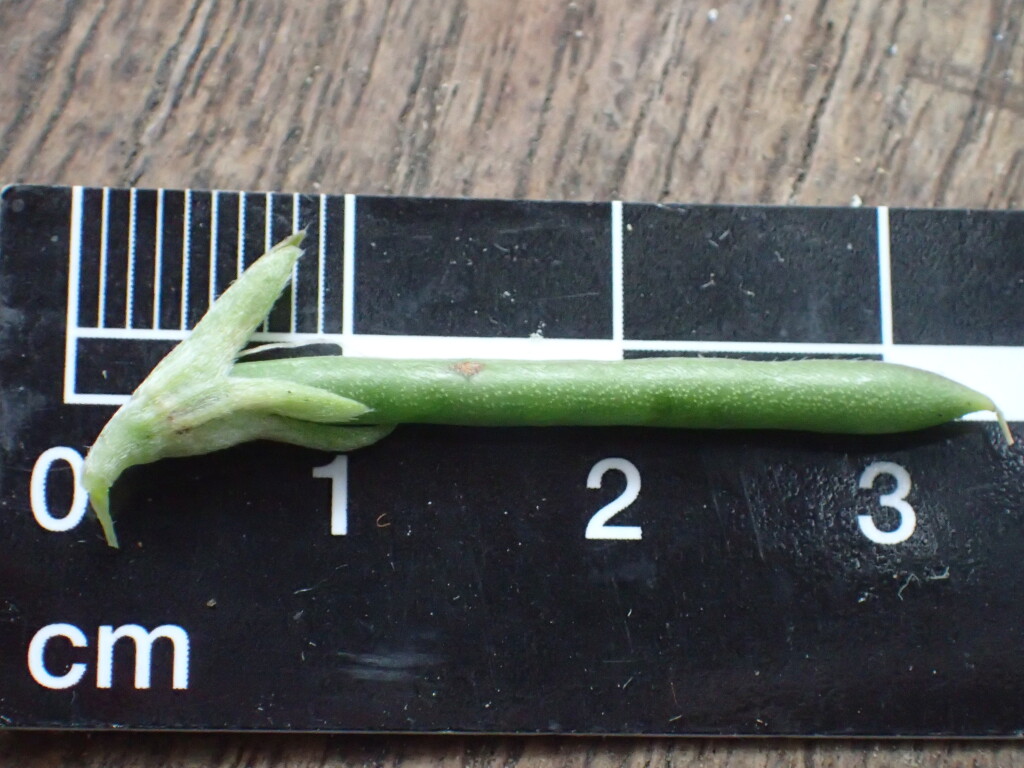Lotus creticus
L. LotusErect or ascending perennial herb or subshrub; stems to 40 cm tall, densely appressed-pubescent, grey in appearance, somewhat flexuose. Leaflets dimorphic, appressed-pubescent; basal 2 ovate, 4–8 mm long, 1–3 mm wide, apices acute; terminal 3 obovate to oblanceolate, 5–10 mm long, 1–3 mm wide, apices acute or obtuse. Inflorescences mostly 2–6-flowered; peduncle 1–7 cm long; calyx somewhat bilabiate, 7–9 mm long, appressed-pubescent, teeth erect in bud, about equal to tube, upper 2 slightly shorter than lower 3; corolla 12–16 mm long, golden yellow; standard ovate, equal to keel; keel obtusely curved along lower edge near base, beak long and straight, purple-tipped. Pod terete, 2–4 cm long, 1.5–2.5 mm wide, virtually glabrous; seeds 9–15, subglobose, 1.5–2 mm long, somewhat compressed, mottled, dark brown. Flowers mainly summer–autumn.
VVP, GipP, OtP, CVU, HSF. Native to the Mediterranean coast and Portugal. Established on coastal dune formations in the Queenscliff, Swan Is. and Point Lonsdale areas of the Bellarine Peninsula and also near Anglesea and possibly Frankston.
Jeanes, J.A. (1996). Fabaceae. In: Walsh, N.G.; Entwisle, T.J., Flora of Victoria Vol. 3, Dicotyledons Winteraceae to Myrtaceae, pp. 663–829. Inkata Press, Melbourne.
 Spinning
Spinning